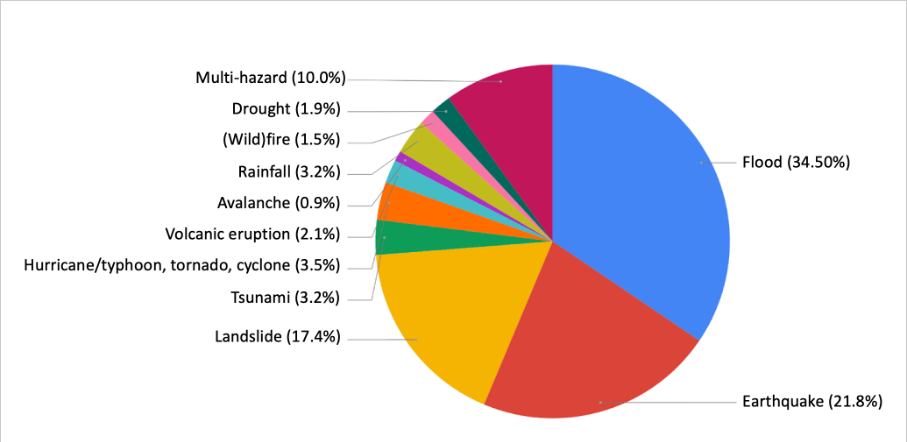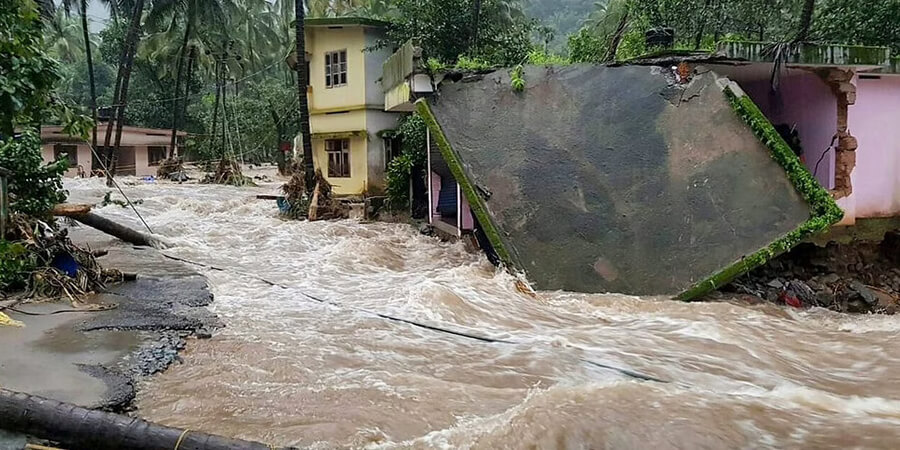Natural disasters are one of the uncontrollable challenges that technology can help to tame. Artificial intelligence offers promising applications to better manage natural disasters and overcome their repercussions.
Indeed, AI can help response teams understand natural hazards, monitor events in real-time and anticipate specific risks in the face of impending or ongoing disasters. “The more early warning we have, the more prepared we are, and the less will be the humanitarian tragedy,” says Muralee Thummarukudy, operations manager at the Crisis Management Branch of the United Nations Environment Programme (UNEP).
The figure below shows the application of AI to the detection and forecasting of natural hazards and disasters. The numbers reflect an overrepresentation of certain natural disaster types, namely floods, earthquakes and landslides.

Source: The World Meteorological Organization (WMO)
Both AI and ML (machine learning) act based on observational data captured from remote sensing (e.g., satellites and drones), instrumental networks (e.g., meteorological, hydrometeorological and seismic stations) and crowdsourcing. “To get value for people, we don’t need just to understand what weather is going to do, but what the weather is going to do to people and to the environment,” explains Anthony Rea, director of WMO’s Infrastructure Department. “This is impact-based forecasting, where I think AI can play a huge role.”
Examples of AI-related Methods
One of the systems used to reduce exposure to natural hazards is the multi-hazard early warning system (MHEWS) which has been created by the United Nations Development Programme (UNDP). AI is also being used to predict flash floods by monitoring and detecting changes in discharge through a network of sensors. Another example is the application of the advanced Global Navigation Satellite System (GNSS) which processes real-time positioning and ionospheric imaging to detect tsunamis.
With the occurrence of natural disasters, AI can provide effective communication to help responders assess the risks and determine the priority of action.
Challenges
Deploying artificial intelligence for disaster risk reduction (DRR) presents challenges at the level of data collection, model development and operational implementation.
In terms of data collection, it is important to consider biases in training/testing datasets, newly distributed AI technologies within the data domain and ethical issues.
When it comes to the model development itself, it is crucial to focus on computational demands and reinforce transparency. AI models tend to rely on complex structures and, as a result, can be computationally exhaustive to train. With this in mind, the results should be humanly understandable.
Operational implementation can also present challenges. The interpretation of AI model outputs should be continually improved, facilitated and adapted to end-user needs.
Tireless efforts are being deployed to address the many challenges when using AI for DRR and to facilitate its use. These efforts aim to ensure greater data availability, provide tools and packages to assist with AI development, enhance model explainability, offer new applications for AI-based methods and contribute to the development of standards.
Data availability is the key; it is the cornerstone of all disaster risk reduction actions, whether AI-related or not. Therefore, it is important to reinforce relevant data collection to gain more insight and be able to choose the right model to be used. It is equally essential to expedite the efforts made to bridge the digital divide in order to better implement AI methods for disaster reduction and management anywhere in the world.










